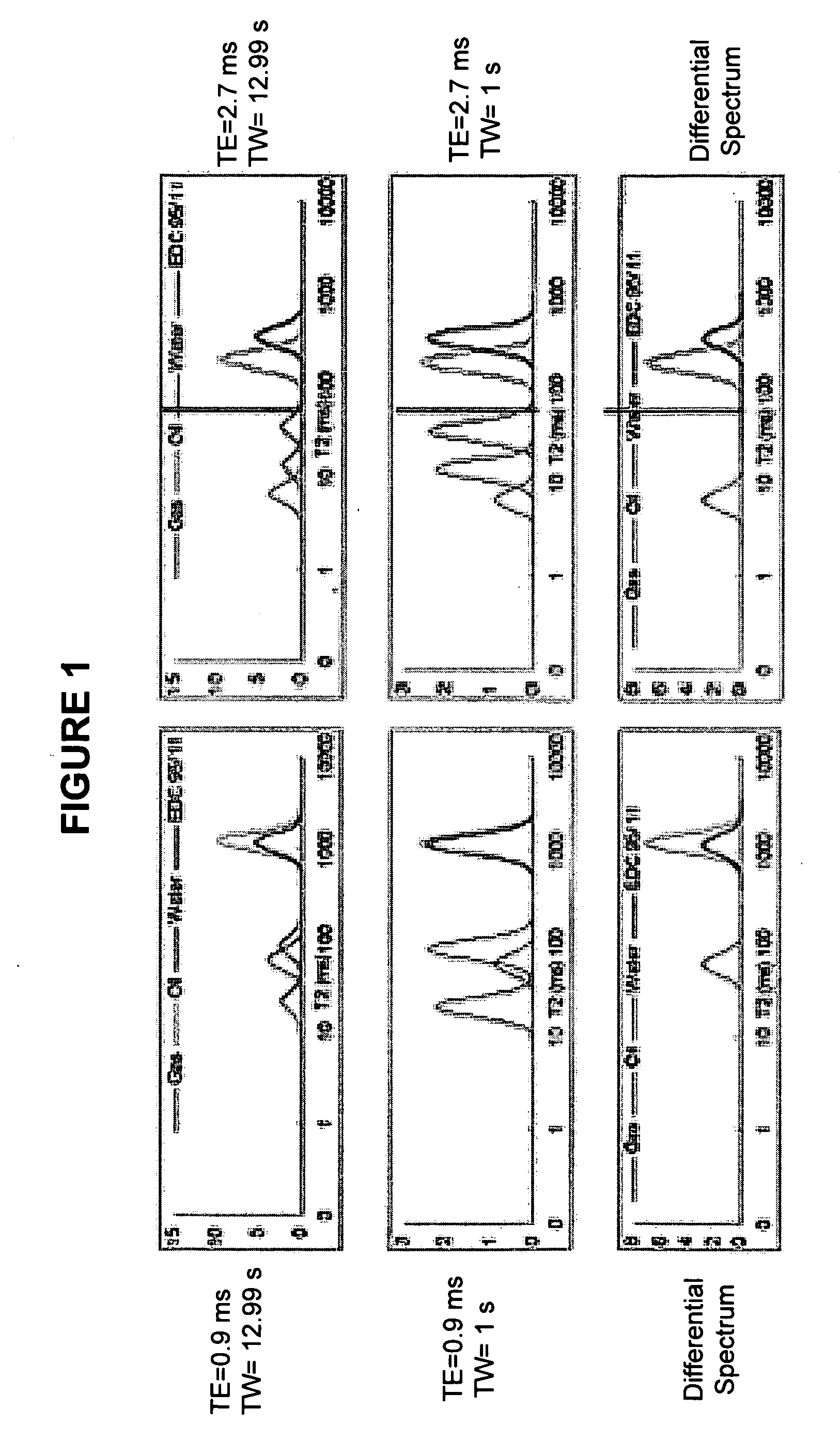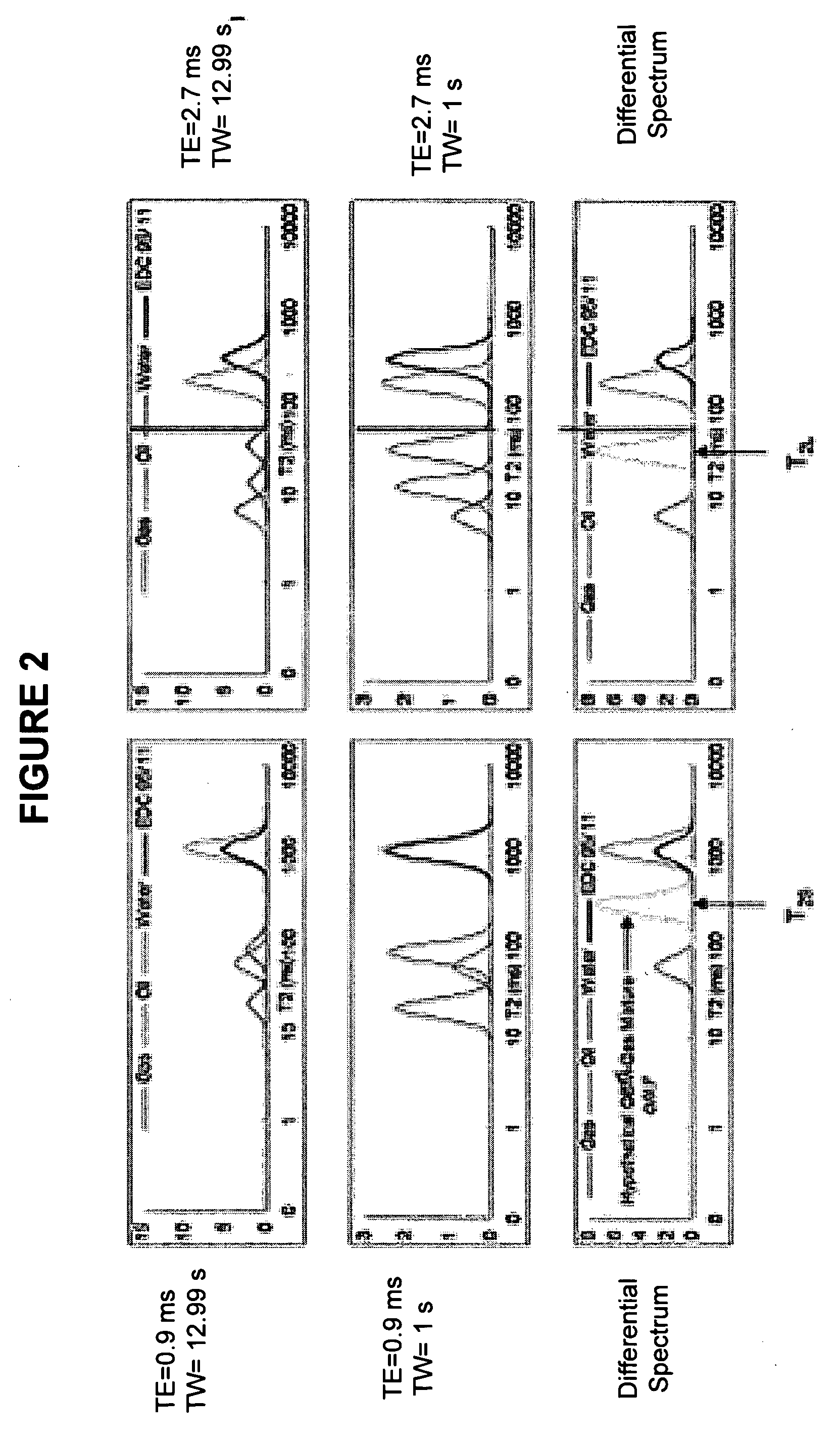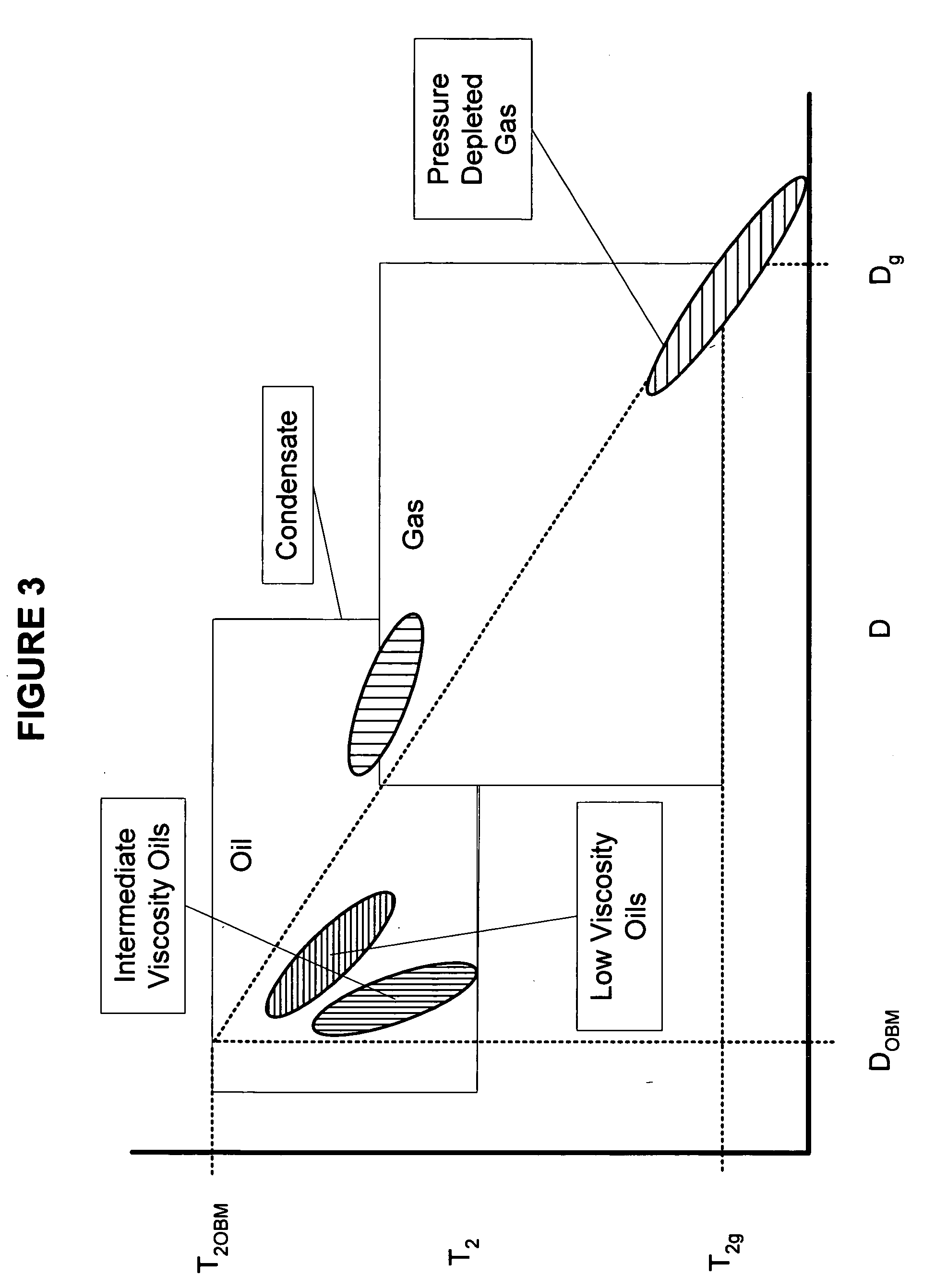Method and apparatus for detecting hydrocarbons with NMR logs in wells drilled with oil-based muds
a technology of hydrocarbons and logs, applied in the field of nuclear magnetic resonance (nmr) logging, can solve the problems of inability to detect hydrocarbons with nmr logs, inability to interpret nmr signals, and inability to apply prior art quantitative methods, so as to reduce the diffusion constant, improve the stability of the well, and suppress the effect of swelling clay
- Summary
- Abstract
- Description
- Claims
- Application Information
AI Technical Summary
Benefits of technology
Problems solved by technology
Method used
Image
Examples
Embodiment Construction
[0041] A system and method are disclosed for identifying native hydrocarbons in wells drilled with oil-based muds by making qualitative assessments of apparent NMR parameters derived from NMR logging measurements. The disclosed new system and method identify the type of native hydrocarbon present in reservoirs drilled with oil-based muds by performing a multi-dimensional qualitative analysis of data from multiple NMR measurements. Inputs from other logging measurements such as conventional nuclear porosity and resistivity logs may also be used to supplement, or confirm the results obtained from the NMR analysis.
[0042] The techniques disclosed herein are also applicable in wells drilled with oil-based muds where quantitative evaluations of hydrocarbon volumes are not required, as a simple qualitative discrimination of hydrocarbon type is desired. In addition, the disclosed techniques may be helpful for identifying depleted gas zones.
[0043] The disclosed approach accommodates the mi...
PUM
| Property | Measurement | Unit |
|---|---|---|
| thick | aaaaa | aaaaa |
| thick | aaaaa | aaaaa |
| frequencies | aaaaa | aaaaa |
Abstract
Description
Claims
Application Information
 Login to View More
Login to View More - R&D
- Intellectual Property
- Life Sciences
- Materials
- Tech Scout
- Unparalleled Data Quality
- Higher Quality Content
- 60% Fewer Hallucinations
Browse by: Latest US Patents, China's latest patents, Technical Efficacy Thesaurus, Application Domain, Technology Topic, Popular Technical Reports.
© 2025 PatSnap. All rights reserved.Legal|Privacy policy|Modern Slavery Act Transparency Statement|Sitemap|About US| Contact US: help@patsnap.com



